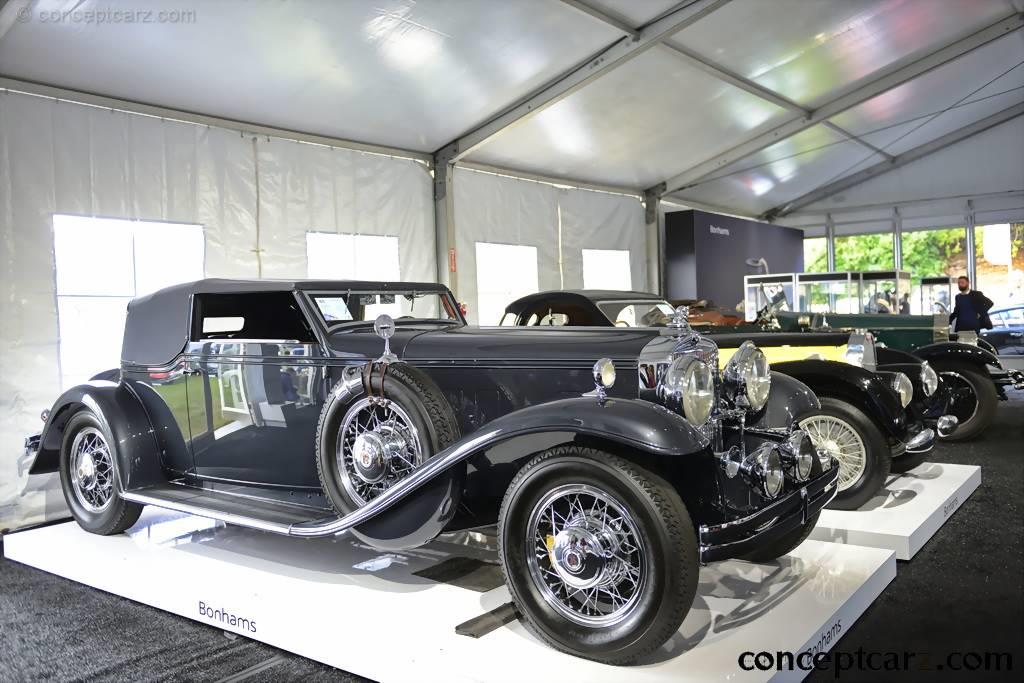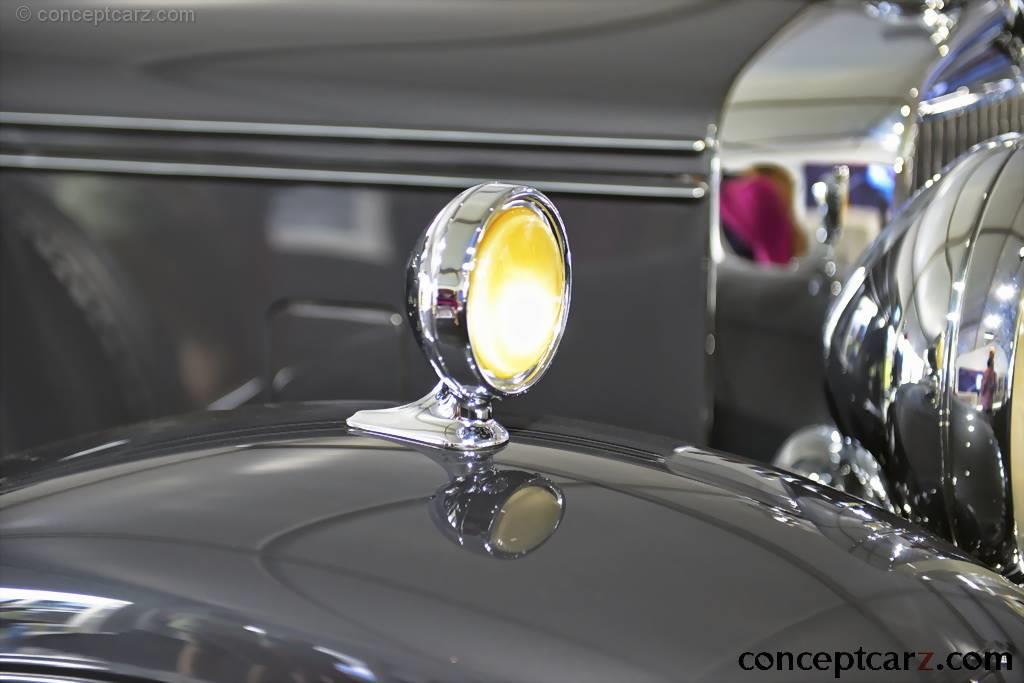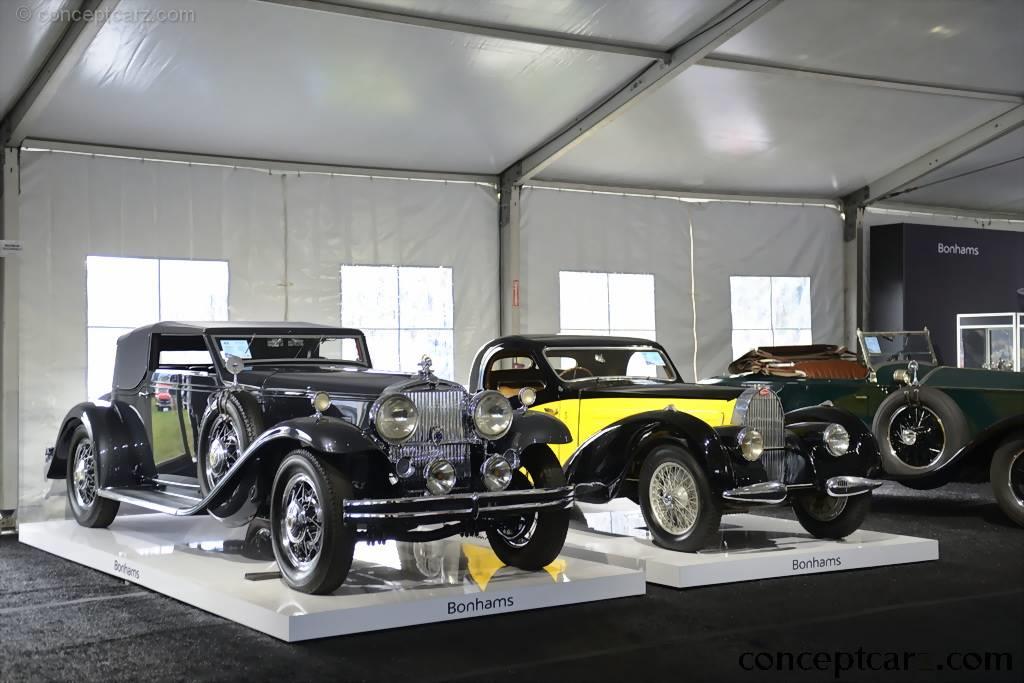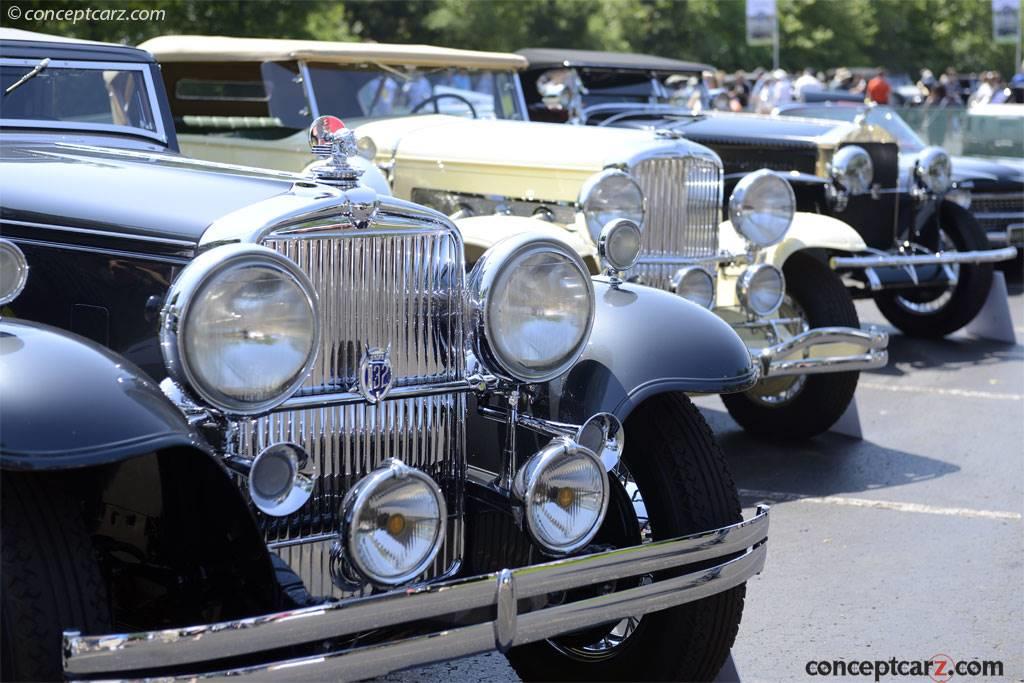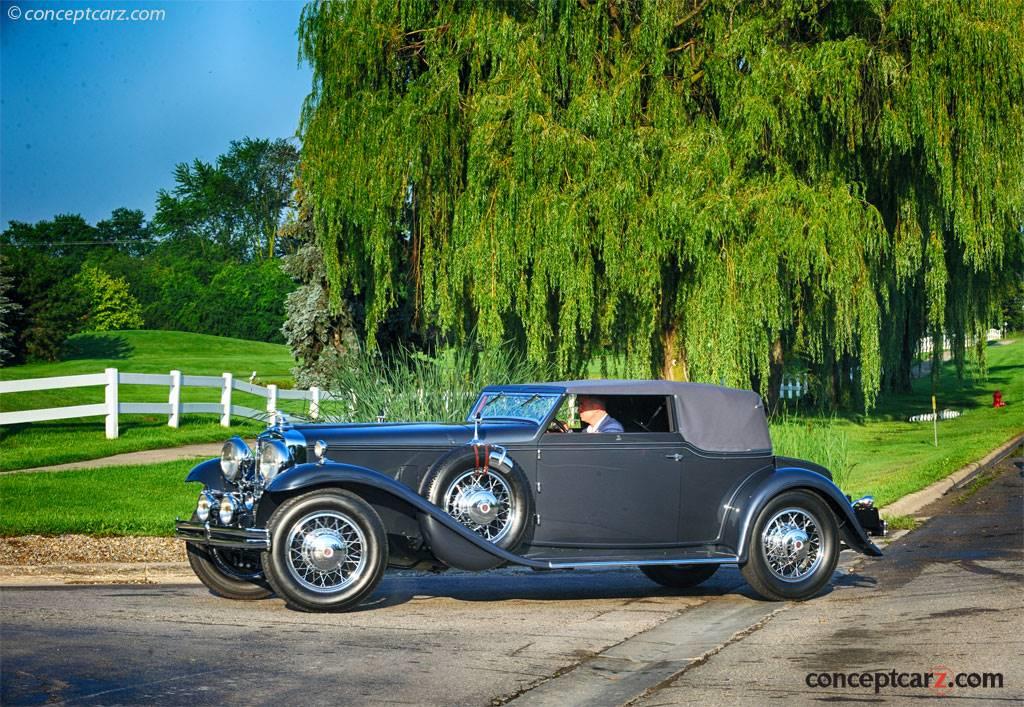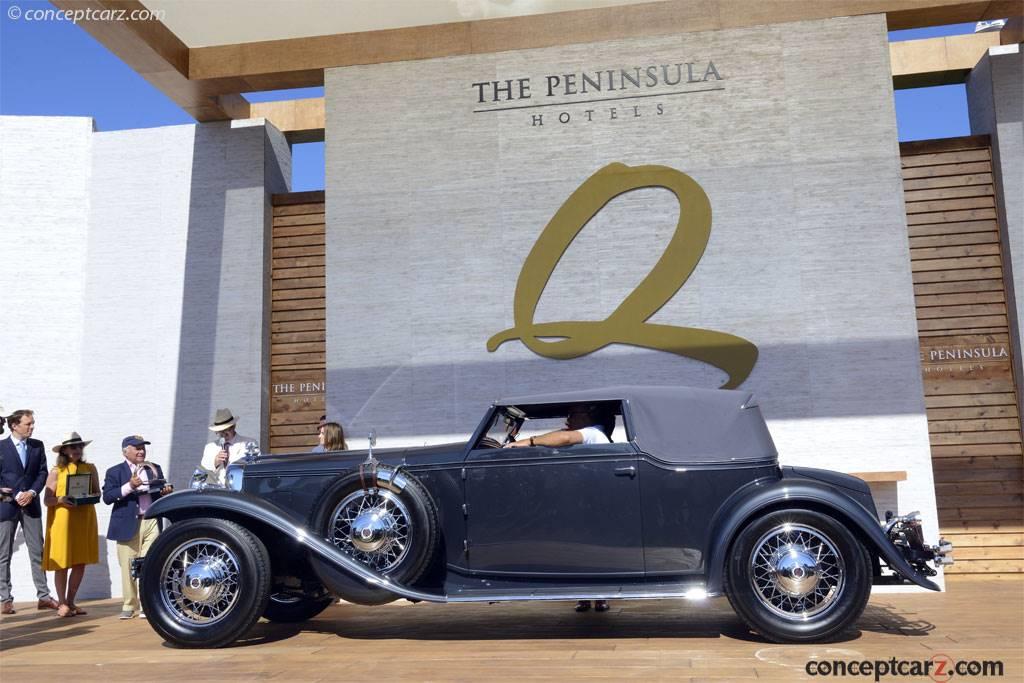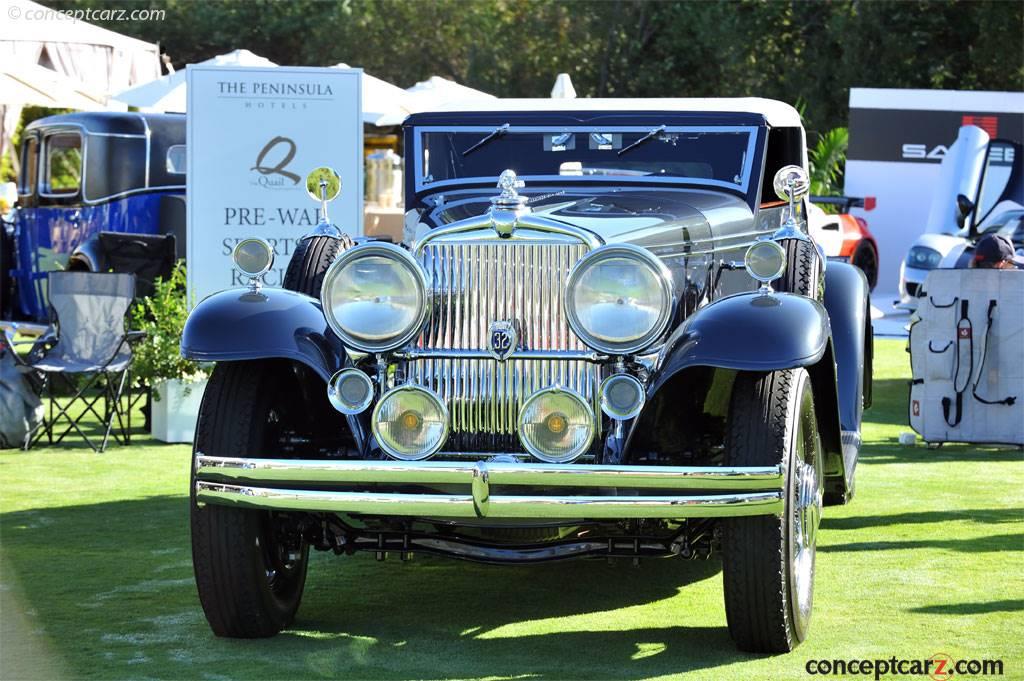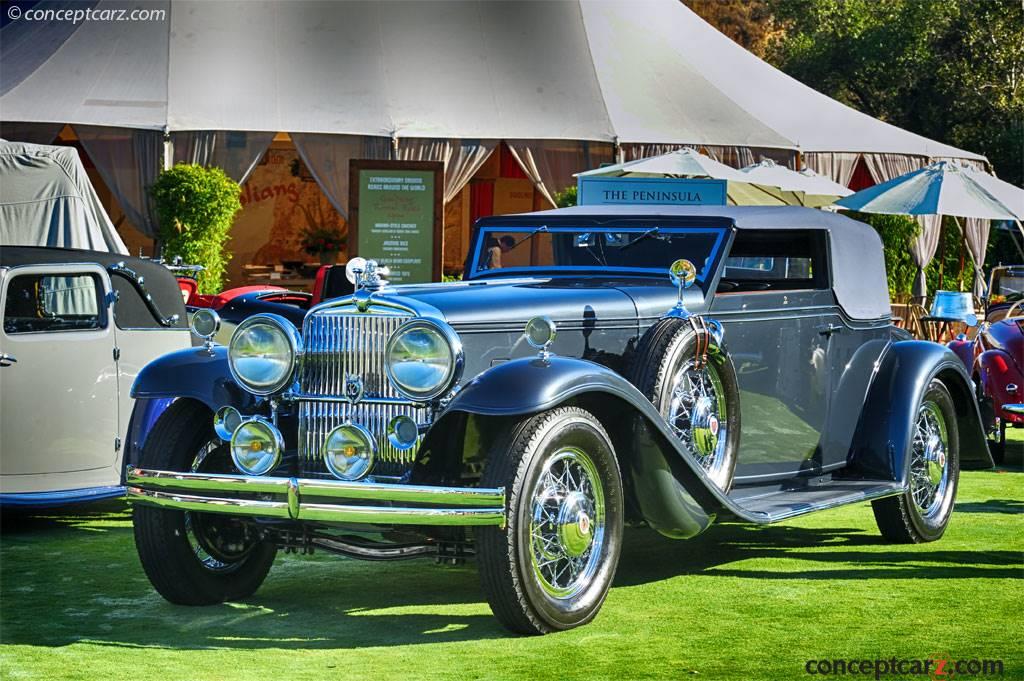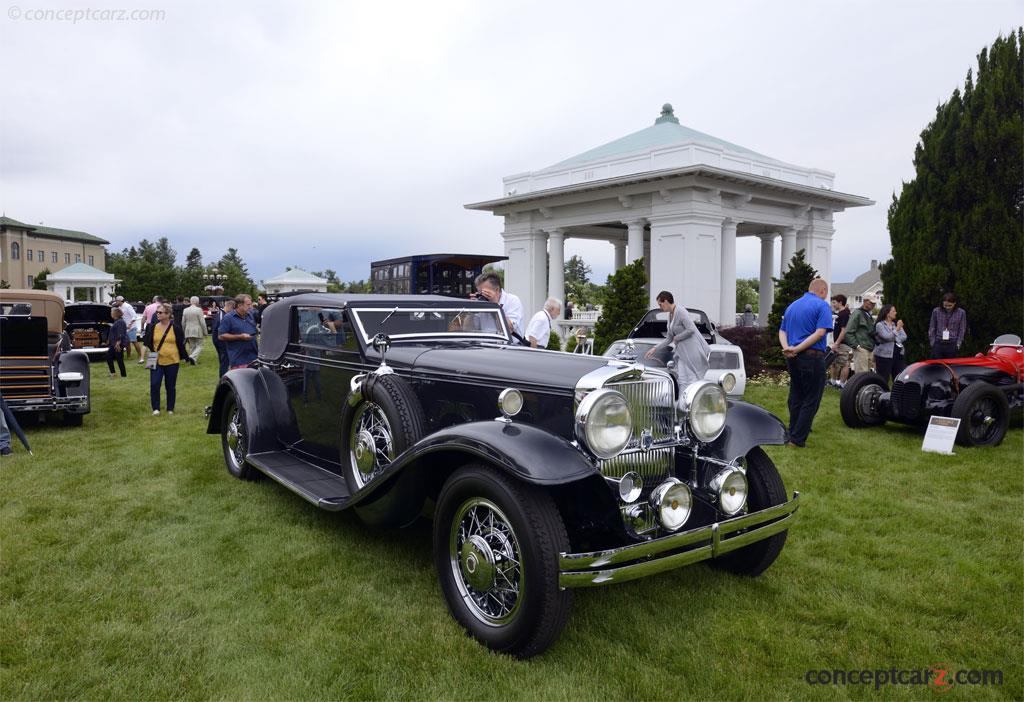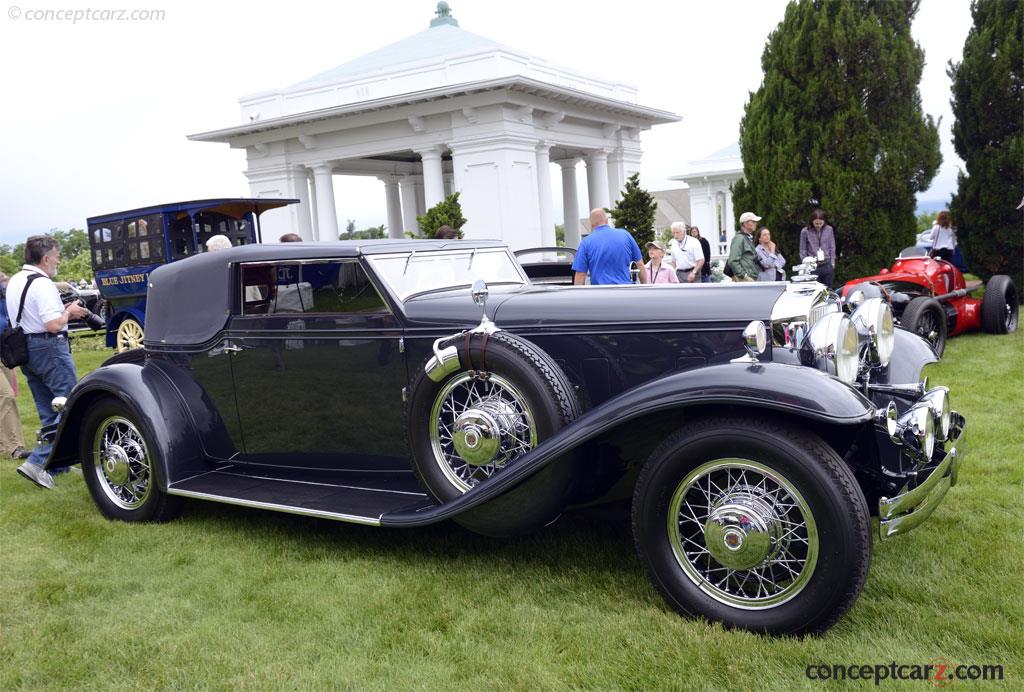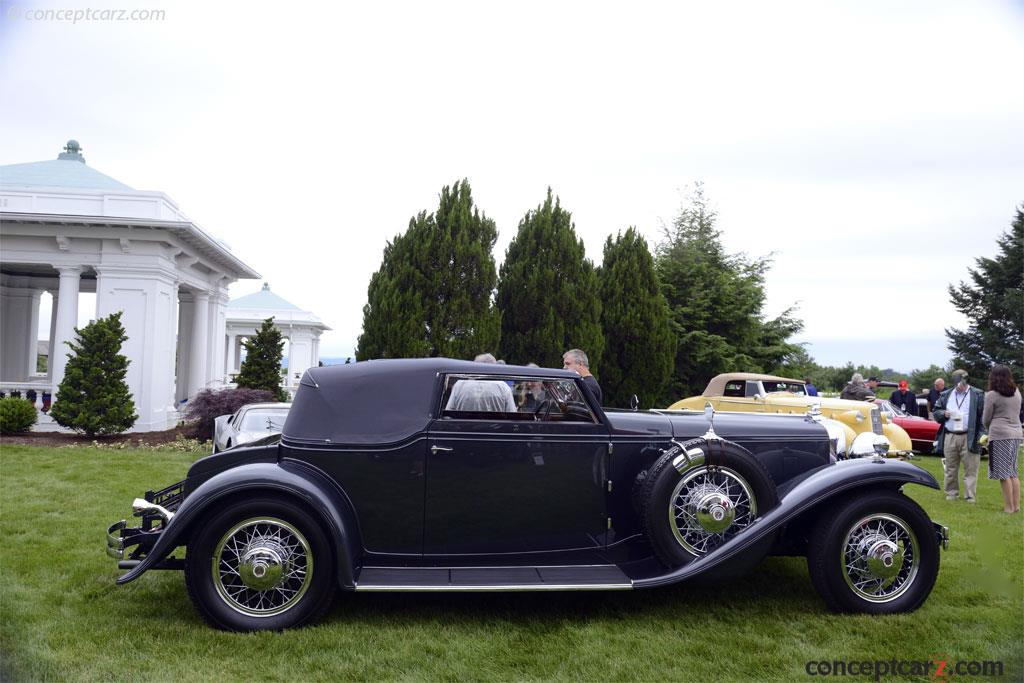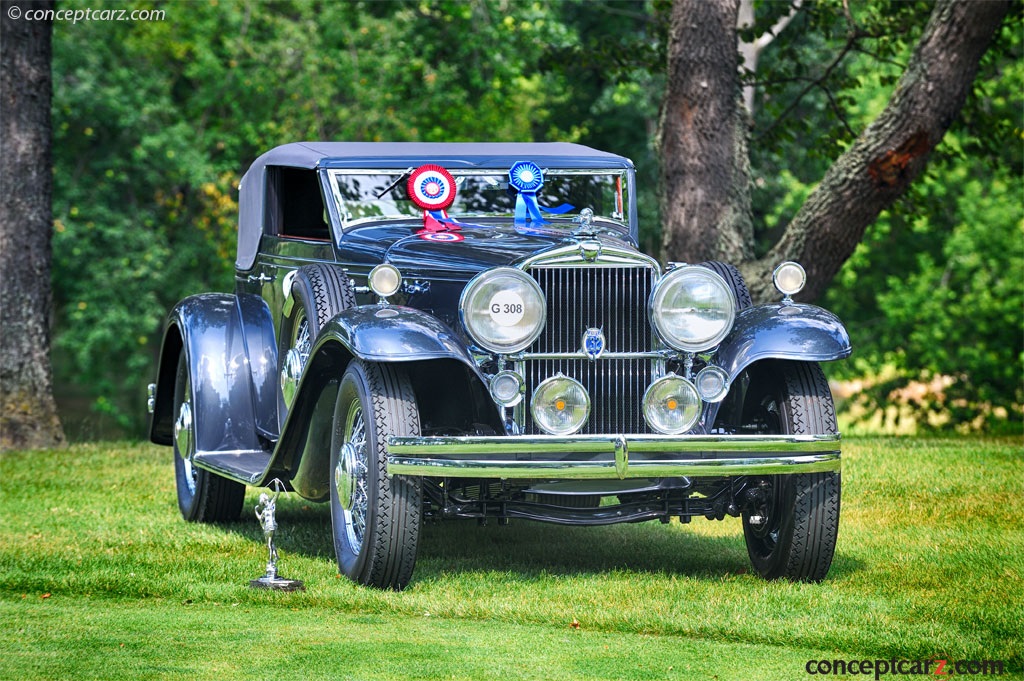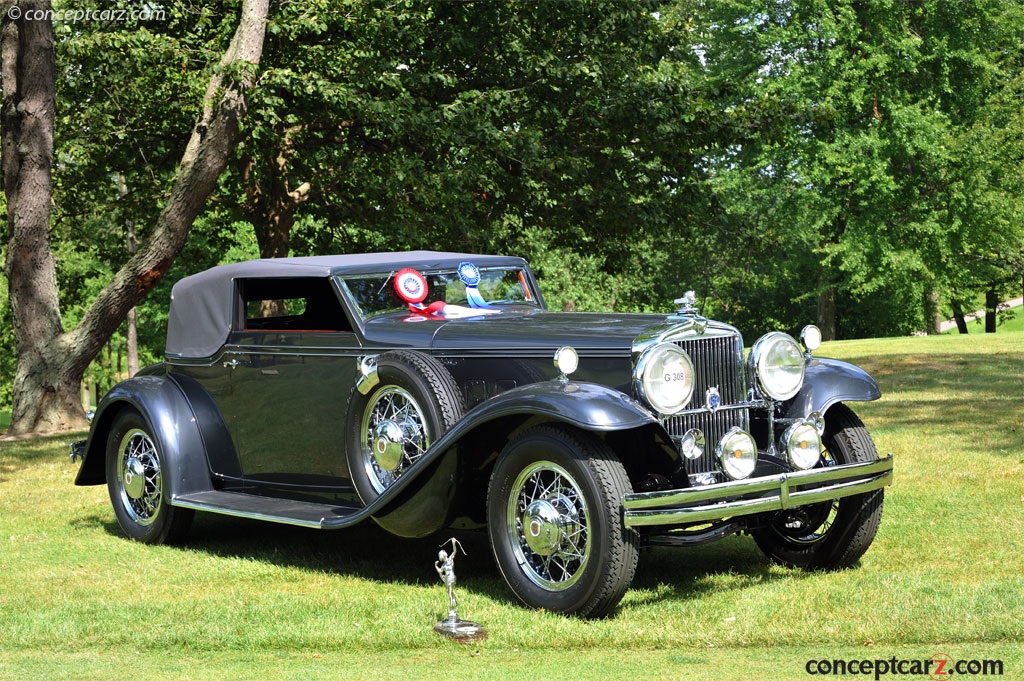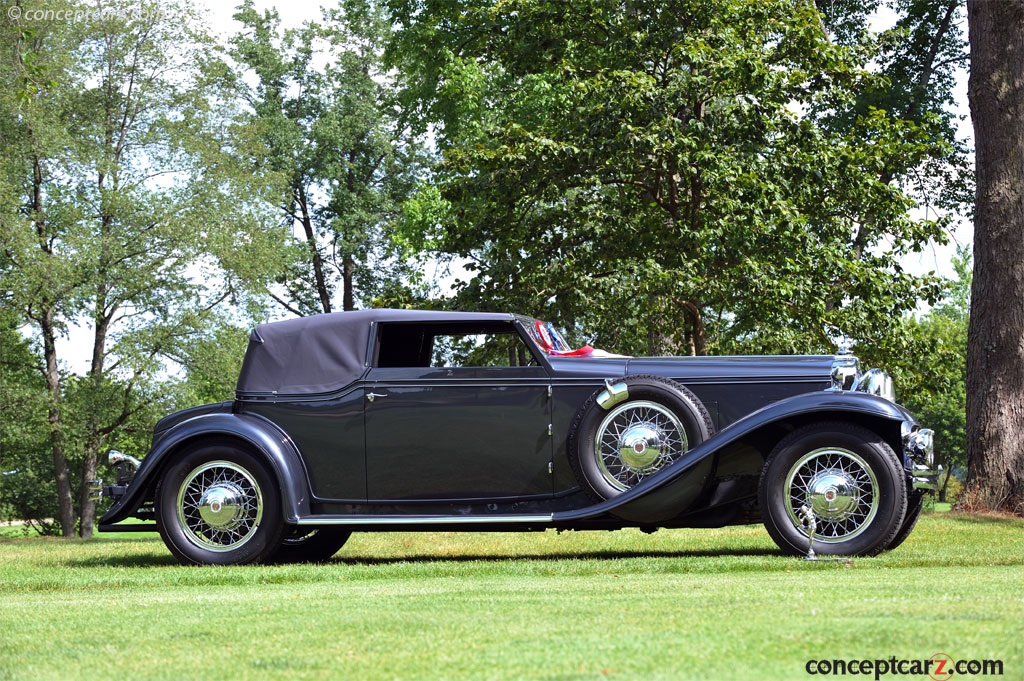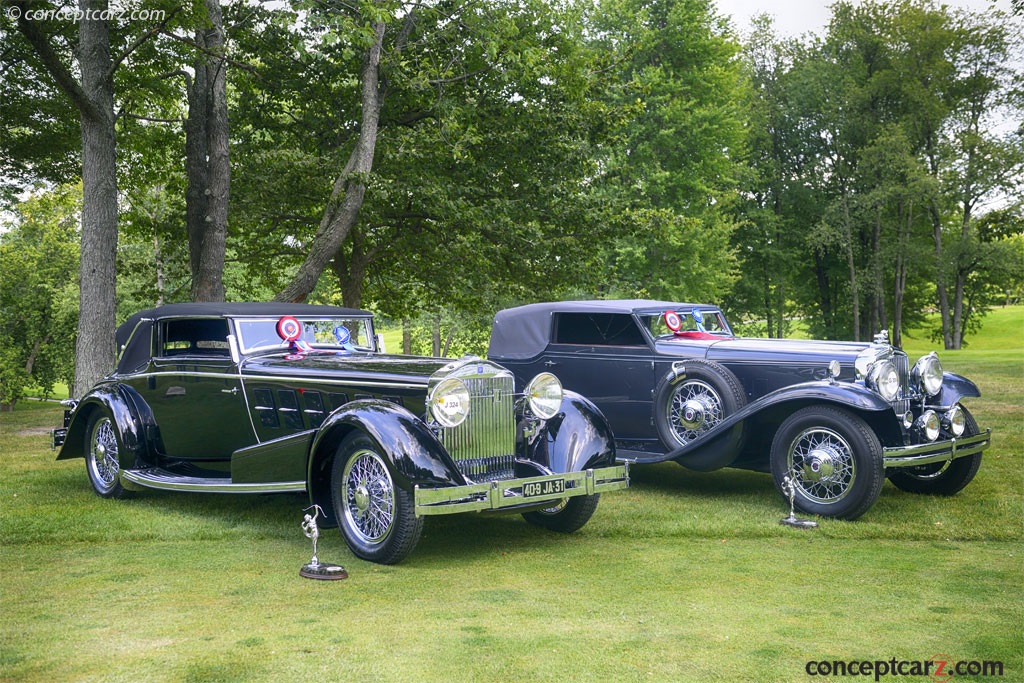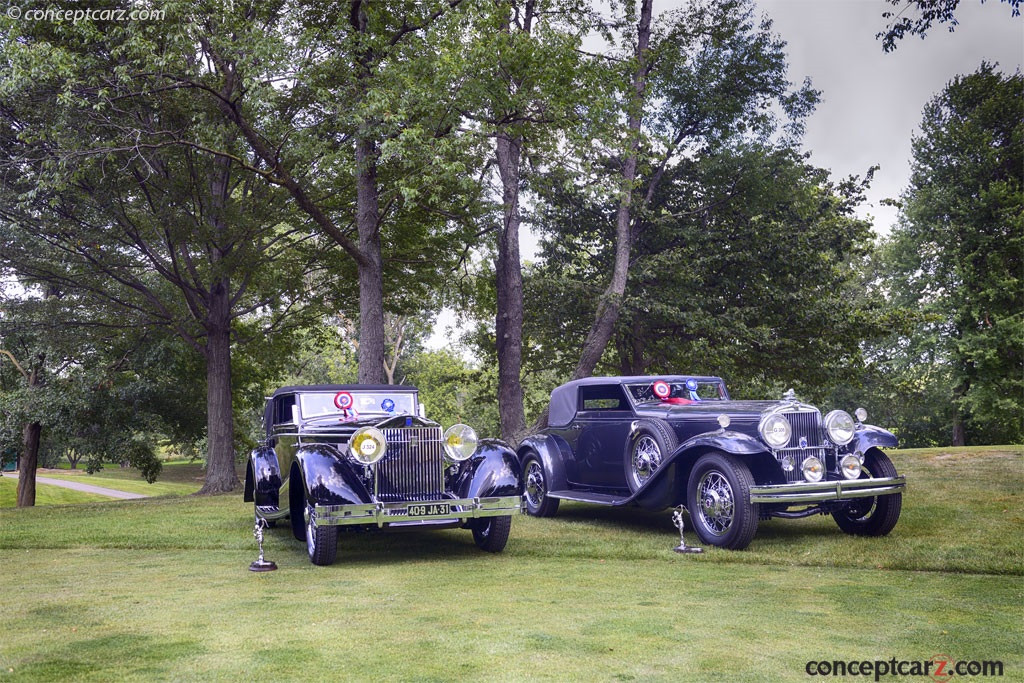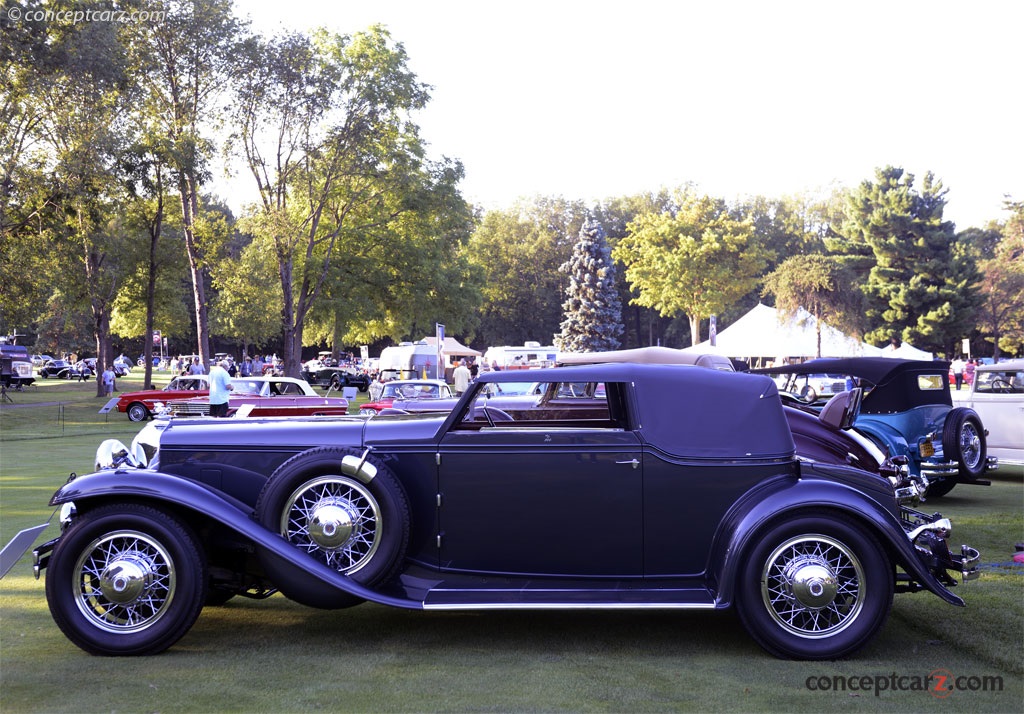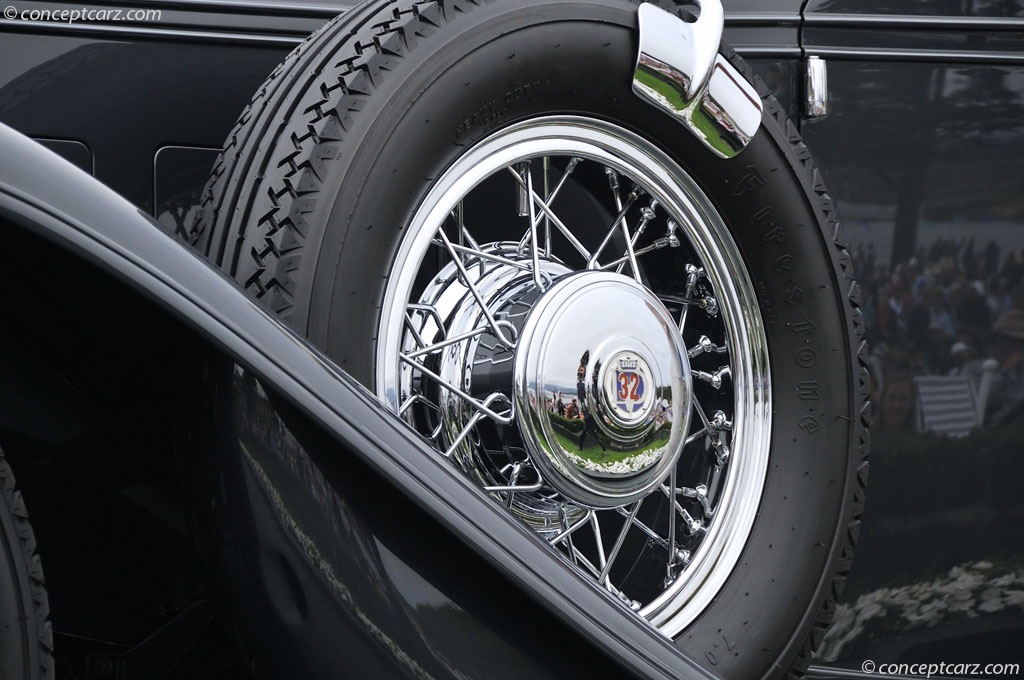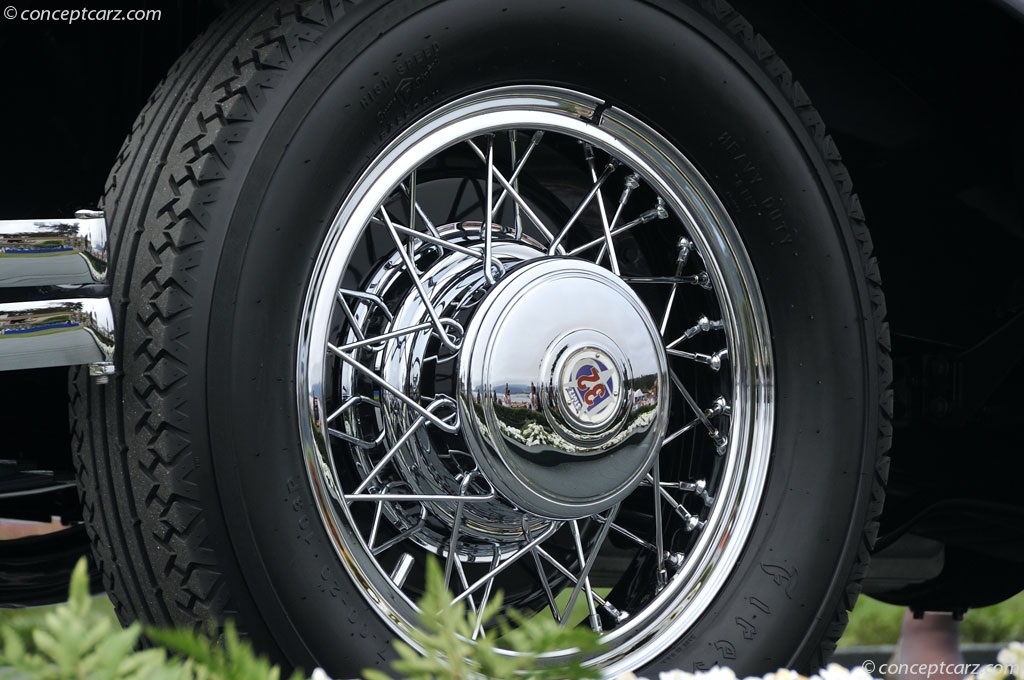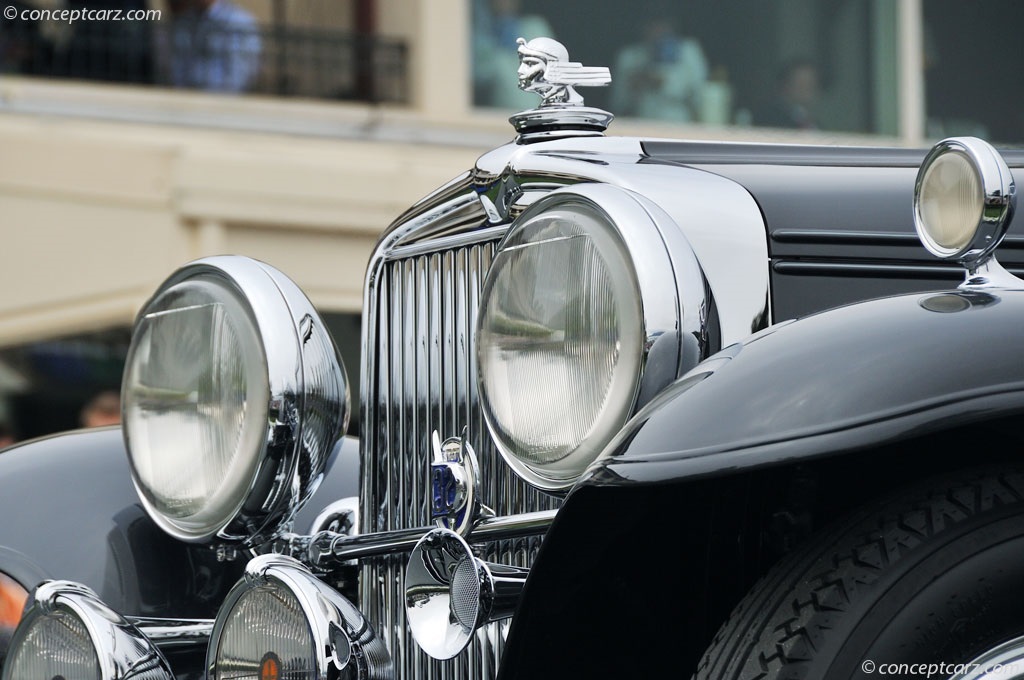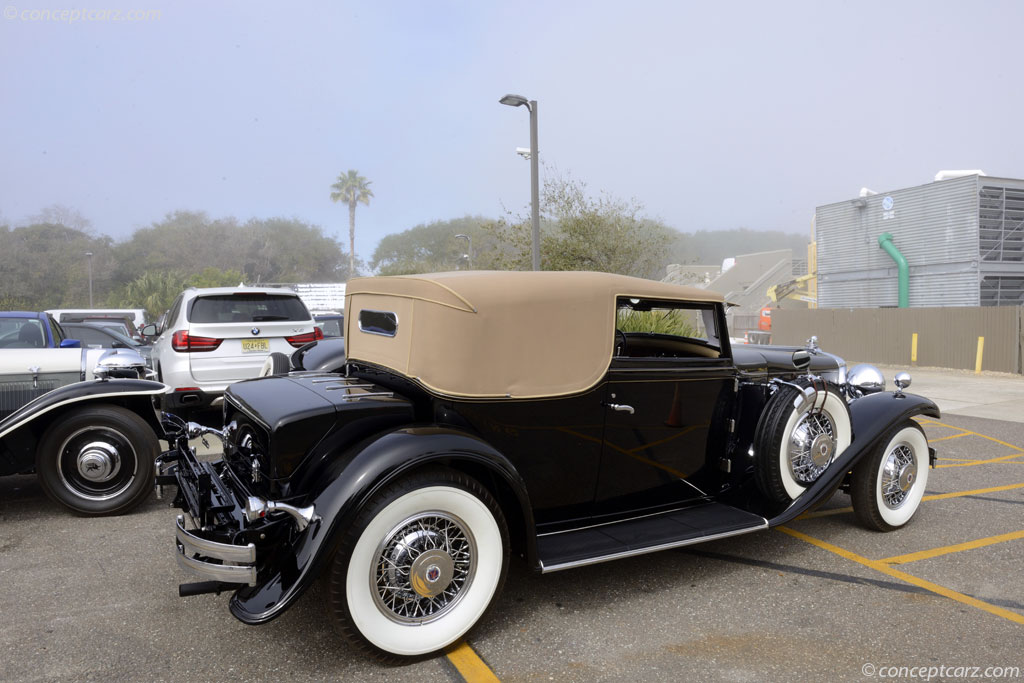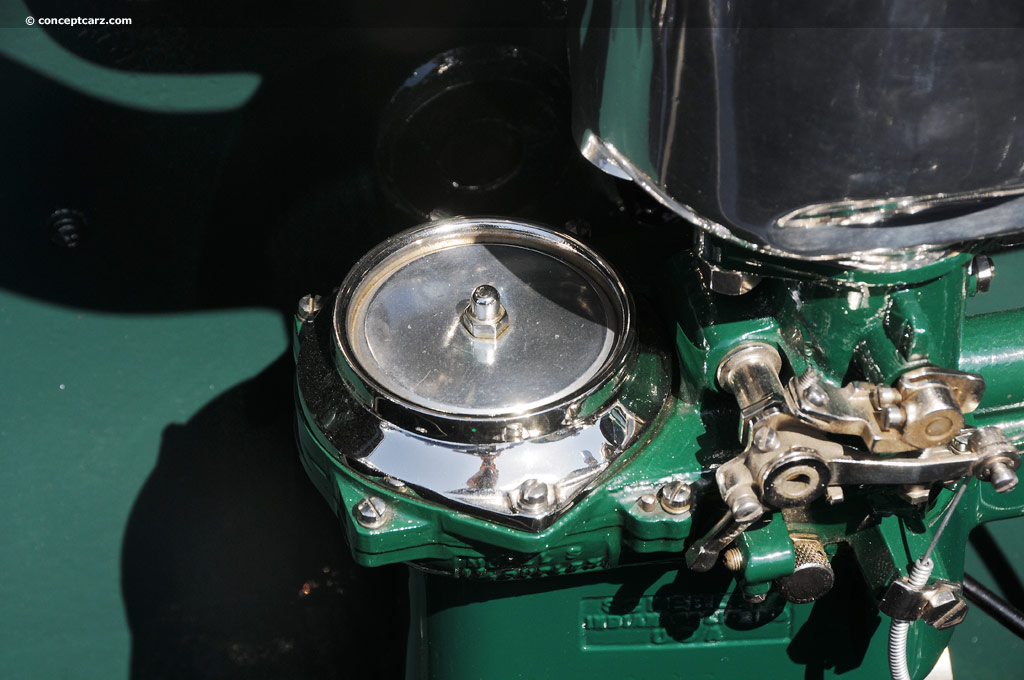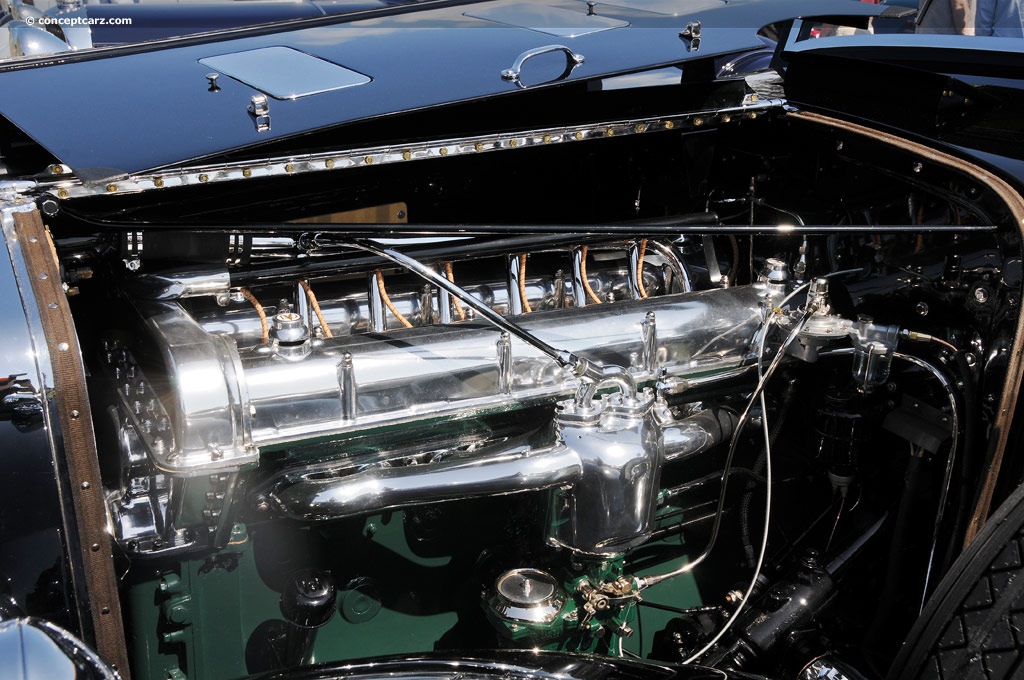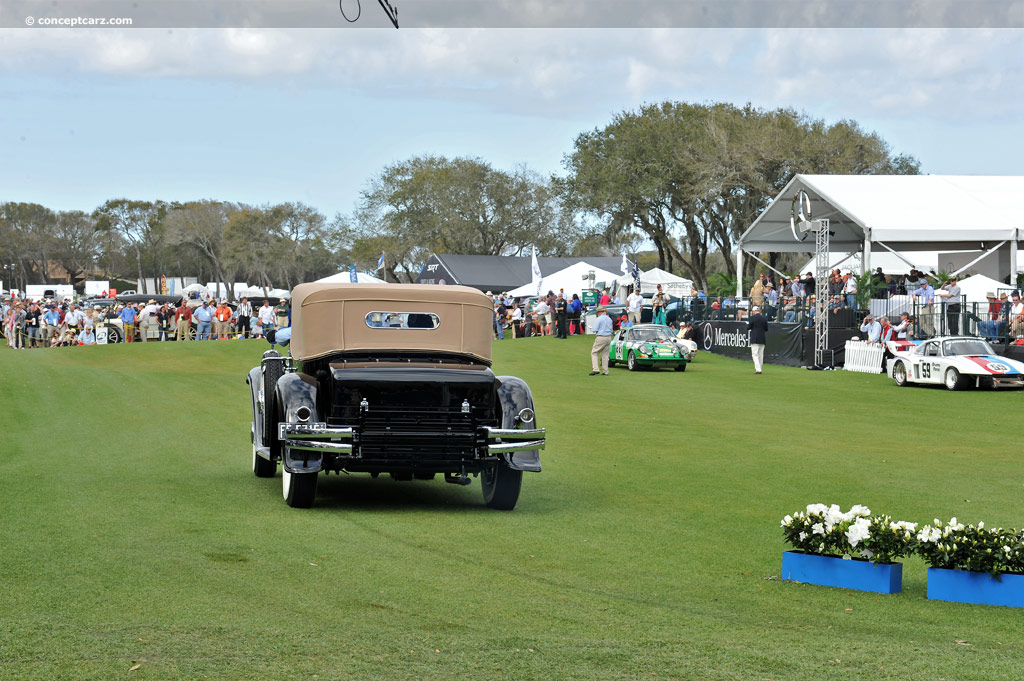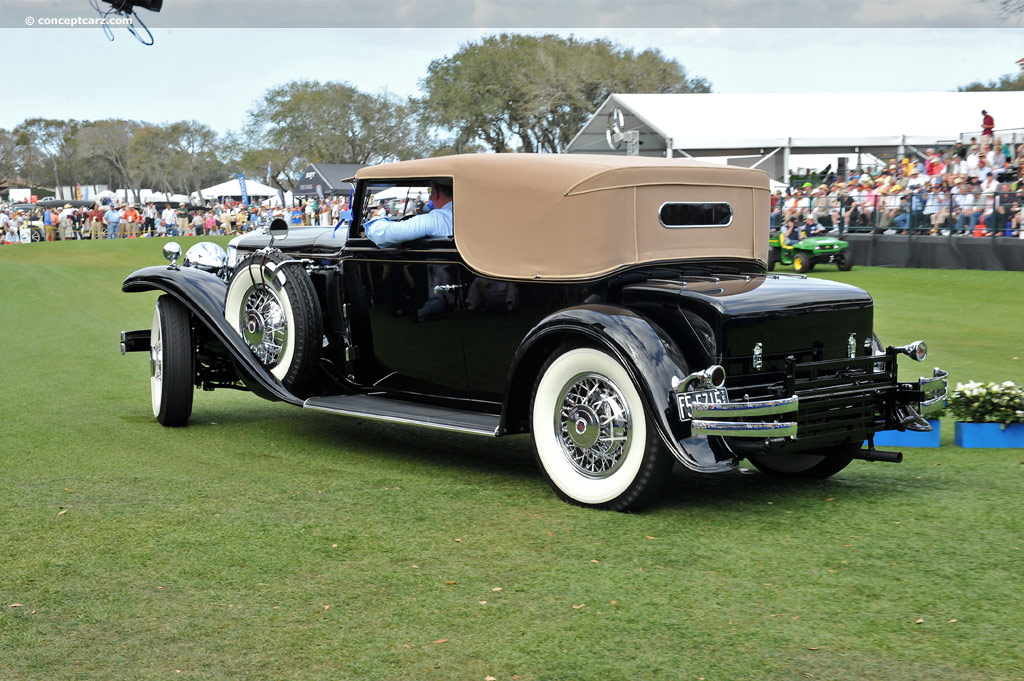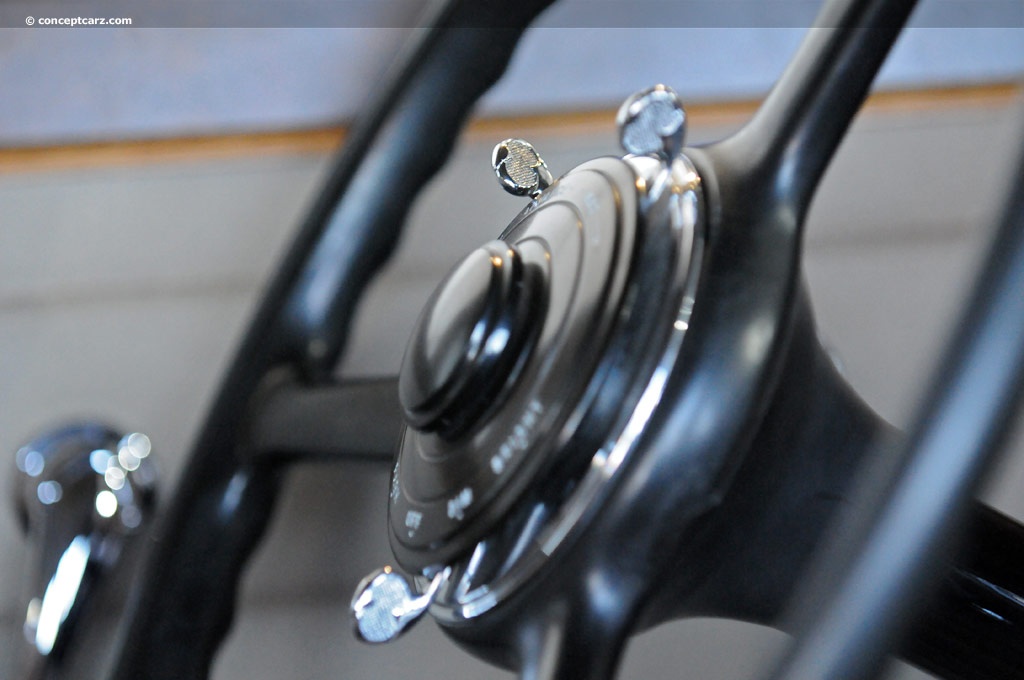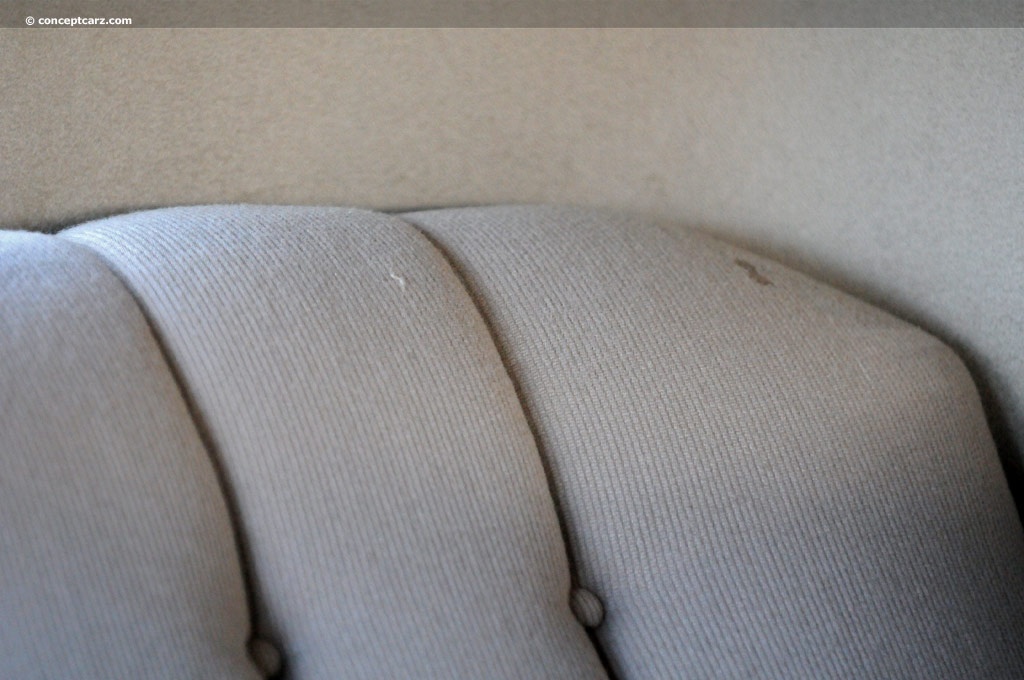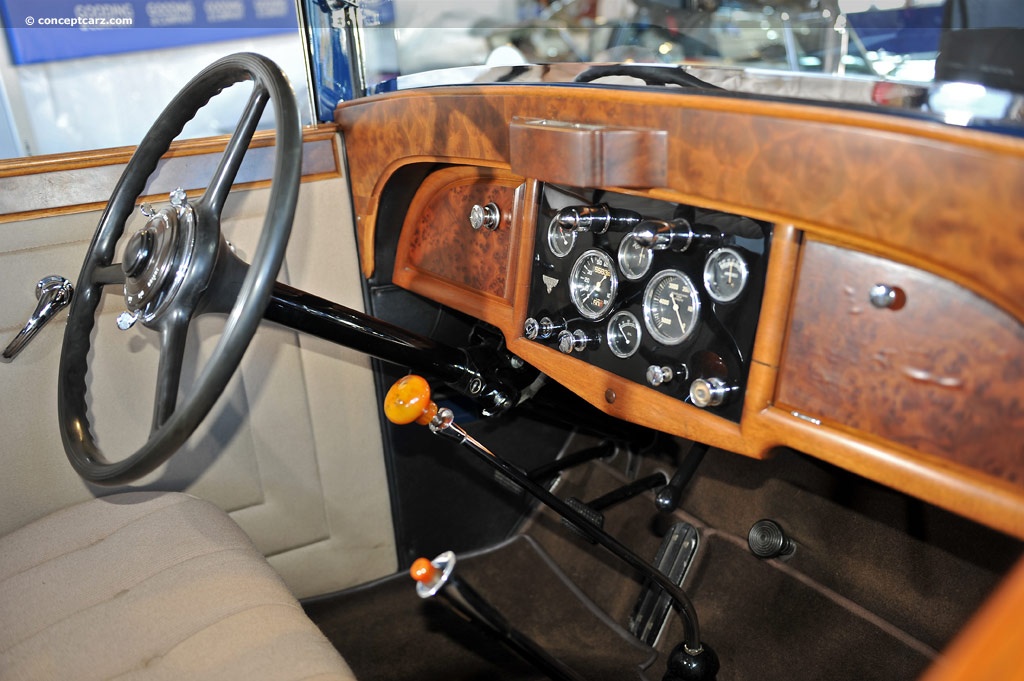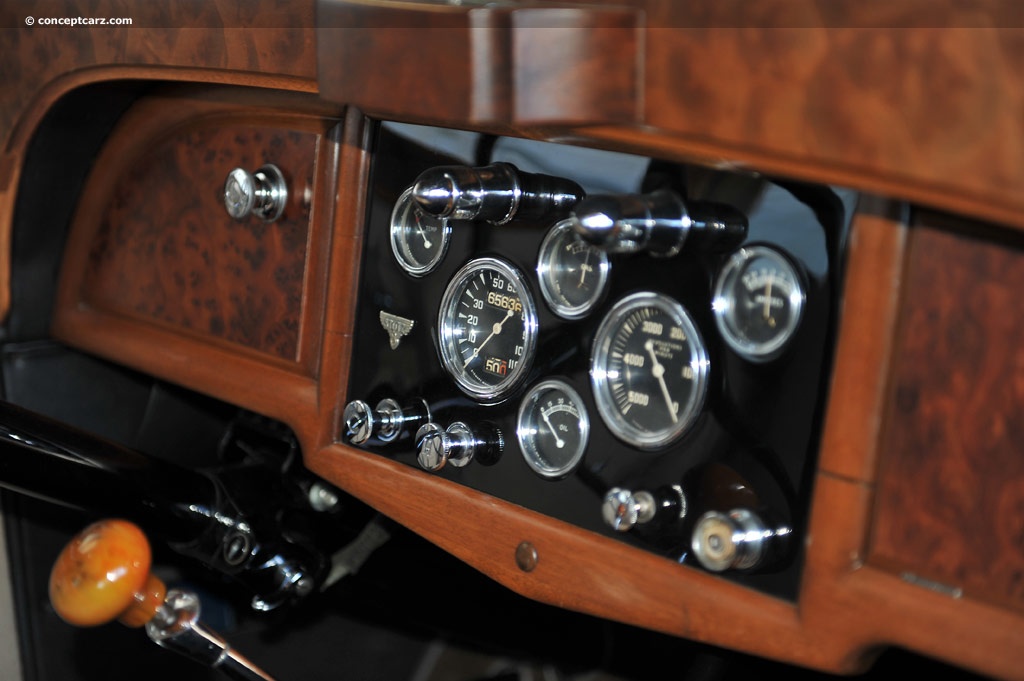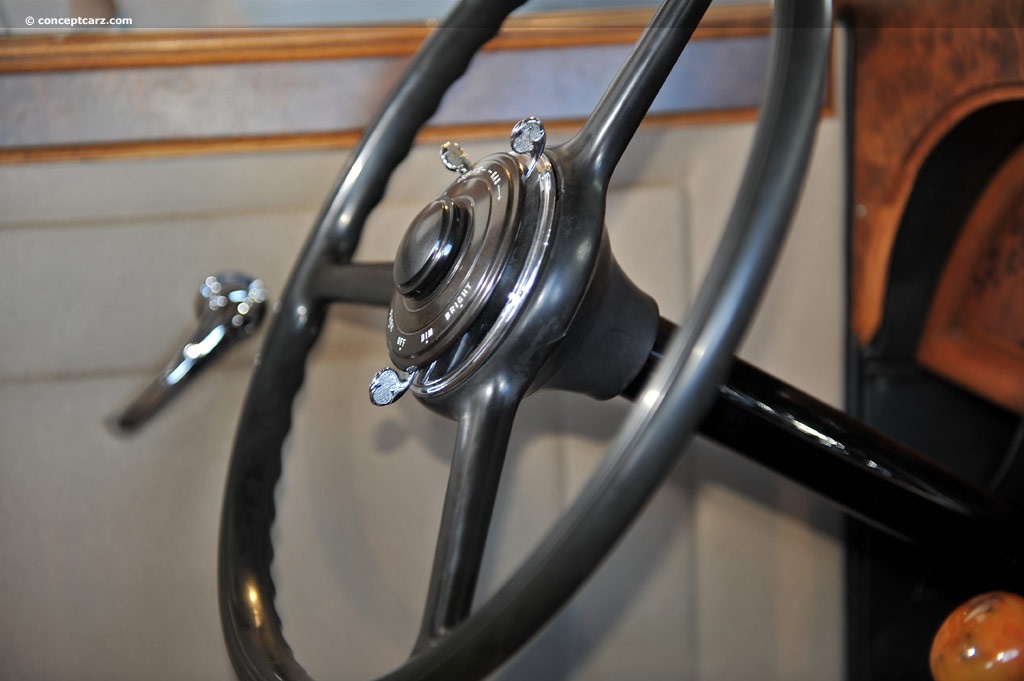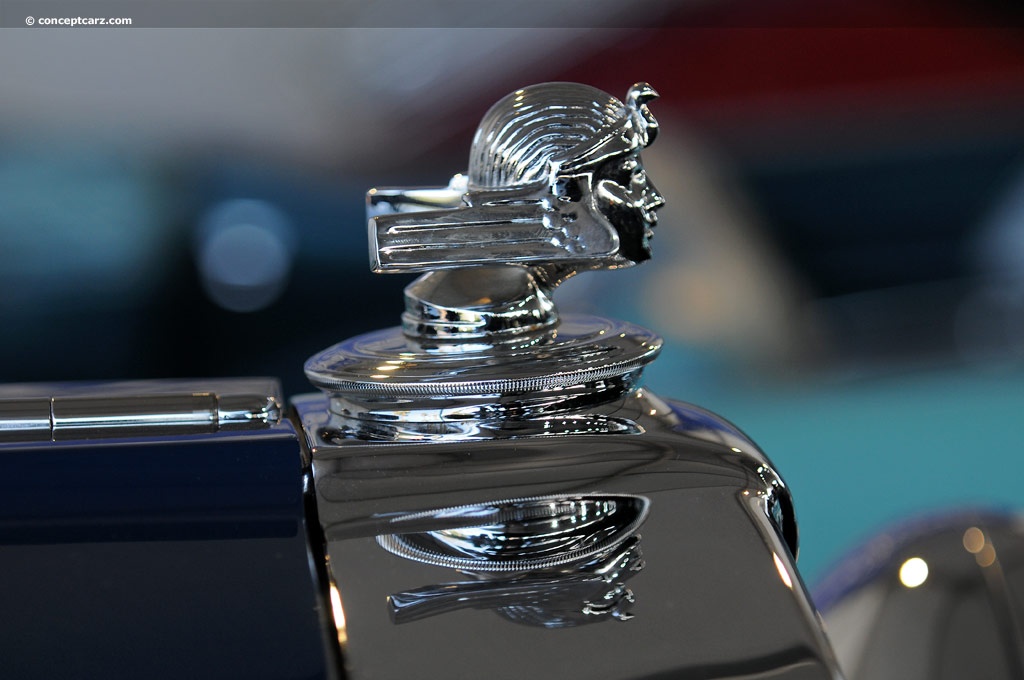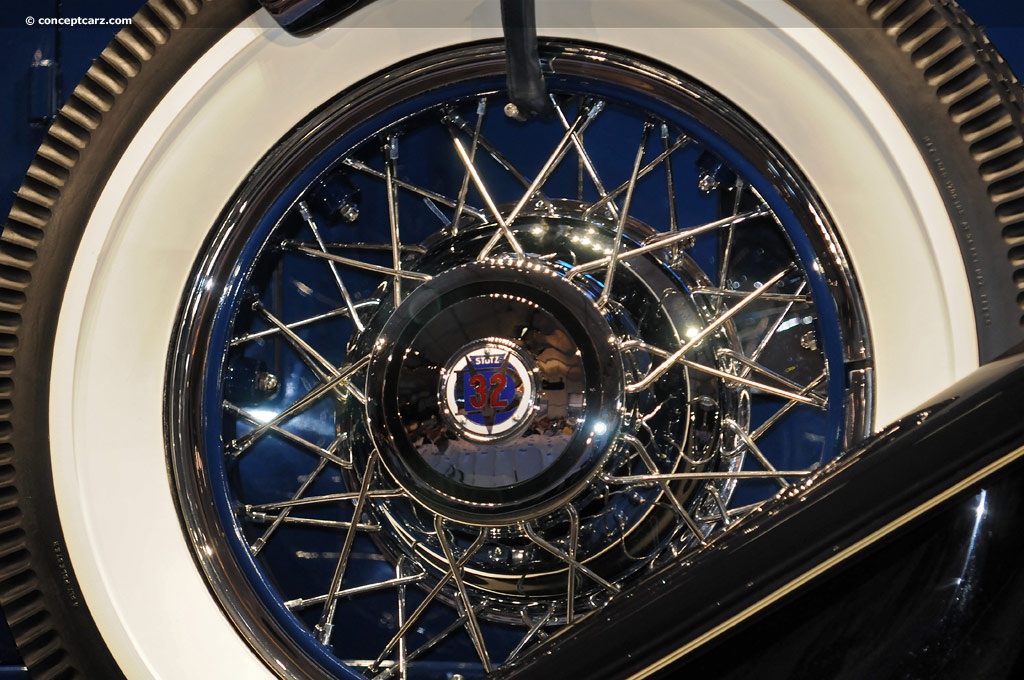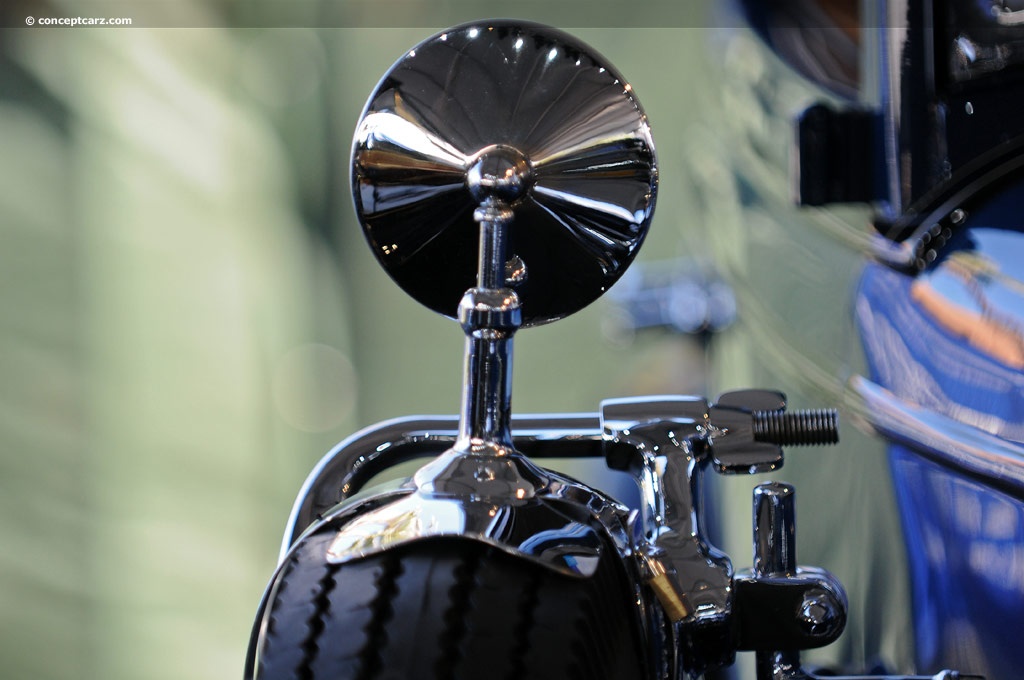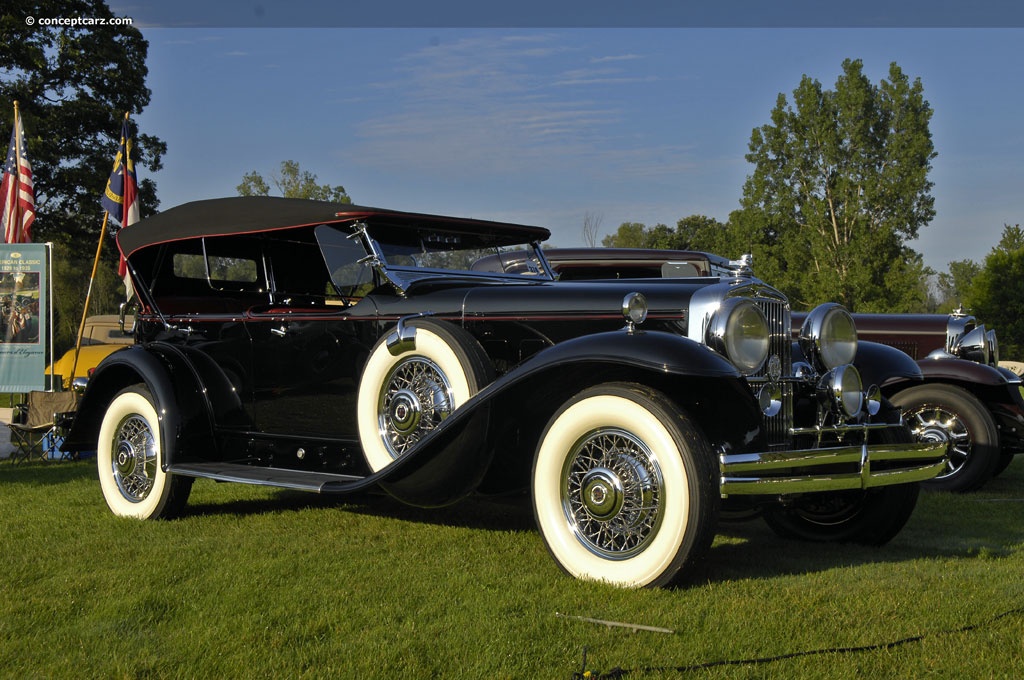The Great Depression was a difficult time, but difficulty was no stranger to Stutz. They had been wounded by the departure of its founder in 1919 and, later, the stock manipulations of Alan Ryan. Bethlehem Steel magnates Charles Schwab and Fred Moskovics helped sustain Stutz, and in 1926 came the introduction of the Vertical Eight engine and the Safety Stutz chassis.
The inline eight-cylinder engine was refined, silent, and achieved better volumetric efficiency due to its overhead camshaft design and Fred Moskovics’ adaptation of a Link-Belt silent chain to drive it. The Safety chassis featured an underslung worm drive rear axle to lower the drivetrain. This allowed Stutz to create a ‘double dropped’ frame which lowered the side rails between the axle centers. The result was a low center of gravity and improved handling, which proved successful when Charles Weymann’s Stutz was driven to a second-place finish in the 1928 24 Hours of LeMans.
Despite the Great Depression, manufacturers continued to introduce powerful V12 and V16 engines. Stutz did not possess the necessary funds to design a completely new engine, so they continuously fine-tuned and upgraded the engine Vertical Eight engine introduced in 1926. The DB-32 would be the last iteration of the powerplant, which began as a 322 cubic-inch former BB engine that had been redesigned by Charles ‘Pop’ Greuter to include dual overhead camshafts and angled valves above the hemispherical combustion chambers. This setup gave the engine its title, the ‘Dual-Valve 32,’ for its four valves per cylinder, with 32 in total. Cadillac’s V12 offered 135 horsepower, and the V16 produced 165 horsepower. The Stutz DV-32 produced 156 horsepower. This meant the Cadillac V16 had 40 percent more cubic inches than the DV-32, yet only made 6 percent more power. Additionally, the Stutz produced approximately the same horsepower-per-cubic-inch ratio as the Duesenberg Model J.
Stutz would last until 1935 after having produced around 200 examples of the DV-32. They offered a vast array of semi-custom coachwork designed and built by the most celebrated coachbuilders of the day. They were given exotic body style names and Charles Weyman contributed to the list by supplying five designs named Monte Carlo, Longchamps, Chantilly, Biarritz, and Riviera. Other names included Versailles, Tuxedo Cabriolet, Prince of Wales, Patrician Coupe, and Chaumont. The DV-32 chassis sent to the 1931 New York Salon wore Waterhouse coachwork in a Continental Coupe design. LeBaron, Fleetwood, Rollston, and Brunn would all contribute coachwork designs to the 1932 Stutz option list.
The Stutz DV-32 Super Bearcat was a 1932-year-only offering. It was an exclusive sports car in a similar fashion to the famous ‘Bearcat’ of two decades prior. It was the only Stutz to rest upon a short 116-inch wheelbase, making it over 18 inches shorter than the standard ‘Safety Stutz’ chassis and 29 inches shorter than the long wheelbase. The company guaranteed speeds that would exceed 100 mph, and to demonstrate its performance, a Super Bearcat shuttled passengers back and forth on Willie K. Vanderbilt’s Long Island Motor Parkway through a speed trap for over six hours. It consistently clocked 103 mph on each pass.
